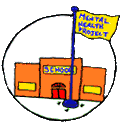

|
|
Paul Reville, the Massachusetts' secretary of education, proclaims that traditional strategies will not, on average, enable us to overcome the barriers to student learning posed by the conditions of poverty. Validation that this is so and that more is needed to enable learning is seen in the federal Promise Neighborhoods program. Constant reminders also are seen in proposed legislation in Congress and across the country for bullying prevention, social-emotional learning, mental health in schools, full-service community schools, coordinated services, and more. Such initiatives reflect wide-spread appreciation that many factors are getting in the way of schools achieving their educational mission and the need to do more than just improve instruction and curriculum in order to enable learning.
But ad hoc and piecemeal policy making to improve student and learning supports amounts to tinkering. Each added initiative increases the already fragmented set of practices that help only a few, and continue to leave far too many students behind, especially in schools predominantly serving economically disadvantaged families. Because so few students are helped, the efforts do little to improve achievement score averages and graduation rates and works against the civil rights ideal of ensuring that all students have an equal opportunity to succeed at school.
What many reformers don't quite get is that practices for directly addressing barriers to learning and teaching are totally marginalized in school improvement policy and practice. This results in almost everyone paying too little attention to the need for a fundamental transformation of student and learning supports.
What's Needed? As John Maynard Keynes stressed: The real difficulty in changing the course of any enterprise lies not in developing new ideas but in escaping old ones. That certainly is the case with respect to policy for improving schools. Some significant strides have been made in (1) enhancing instruction and (2) bettering school management and governance. But reformers need to escape the idea that these two components are sufficient to the challenge of addressing the many factors interfering with school improvement and student progress.
Policy leaders have to adopt a third primary and essential component focused specifically on addressing barriers to learning and teaching and re-engaging disconnected students. In place of ad hoc and piecemeal policy, this third component, first and foremost, provides a framework for unifying and weaving together all school resources currently expended for student and learning supports. And then, it stresses discriminative braiding in of a wide range of community resources to fill gaps (e.g., see https://smhp.psych.ucla.edu/pdfdocs/somestudentsdidwell.pdf). The intent over time is to replace the current laundry-list of fragmented practices, with a comprehensive, multifaceted, and cohesive system that can serve all students.
Several pioneering initiatives around the country already are working on this. For example, the Louisiana Department of Education has used the three component framework to design its new Comprehensive Learning Supports System. For other examples, see Where's It Happening?.
Now is the time for all education reformers to escape old ideas and move beyond tinkering with student and learning supports so that many more students can have an equal opportunity to succeed at school.
We are interested in posting comments on this issue. Please send them to Ltaylor@ucla.edu or adelman@psych.ucla.edu
You can also post a response on our Facebook page.
| In addition, see the list of Emerging Issues identified over the years by the Center and used as a stimulus for discussion on our Net Exchange - https://smhp.psych.ucla.edu/newnetexchange.htm |
Previously highlighted hot issues
- Reporting on Teacher Effectiveness: The Discussion Heats Up
- Reauthorizing the No Child Left Behind Act and Addressing Barriers to Learning
- Grade Retention: What's the Prevailing Policy and What Needs to be Done?
- Suicide Prevention in Schools
- Should Policy Specify a Formal Role for Schools Related to Mental Health?
- Screening Mental Health Problems in Schools
Back to Current Hot Issues School Mental Health Project-UCLA
Center for Mental Health in Schools
WebMaster: Perry Nelson (smhp@ucla.edu)
